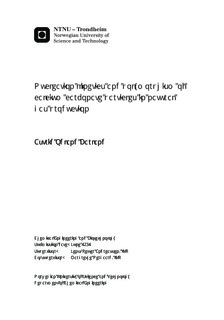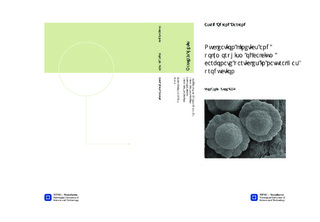| dc.description.abstract | Precipitation of calcium carbonate in pipes and process equipment is a widespread problem in natural gas production as we know it today. Studies of calcium carbonate systems are crucial to prevent this problem.
When the mixture of natural gas and well water is to be transported towards the on shore facility, mono ethylene glycol (MEG) and sodium hydroxide (NaOH) are injected at the well head to prevent respectively plugs of hydrates in the pipelines and corrosion. Calcium-ions from the reservoir and iron-ions from corrosion in the steel pipelines can react with carbonate in the water/MEG-mixture and form particles. To prevent further precipitation and growth of calcium carbonate in process equipment, the particles are removed from the bulk in the MEG pre-treatment in the MEG regeneration loop. To know which conditions are optimal in removal of the nucleated particles, different aspects of the nucleation mechanism must be investigated.
The objective of this master thesis was to investigate the kinetics and polymorphism in a calcium carbonate system at varying parameters. The varying parameters were supersaturation, temperature and weight percent of MEG, and the experiments were denoted by (SR, T, w% MEG). The supersaturation was varied from 20 to 100, the temperature between 40 and 70 °C and the content of MEG between 0, 40 and 80 w%. Also variation in stoichiometry was investigated.
The nucleation rates were calculated on the basis of the induction times, which were determined experimentally. The induction time is defined as the time it takes before a supersaturated system starts to precipitate detectable crystals. Two different methods were tested to measure the induction time, the pH measurement method and the conductivity measurement method. The method chosen to determine the induction times in all the experiments was the pH measurement method because of the more stable results. It was found that induction time decreased with increasing supersaturation and/or temperature, while it increased with increasing content of MEG in the solution. When the activity ratio between calcium and carbonate was varied in the 40-40-0 experiment, it was found that the induction time increased when the ratio became > 1.
The polymorphism obtained in the experiments were studied and characterized in a Scanning Electron Microscope (SEM) and by powder X-Ray Diffraction (powder-XRD). MEG decreased the size of the particles in the solutions, and only affected the polymorphism at the high MEG content of 80 w%. Variations in supersaturation and/or temperature gave different polymorphism in the experiments. Especially the polymorph vaterite changed morphologies when the supersaturation and/or the temperature was changed, and appeared as flowers at supersaturations ≥ 30 and a temperature of 40 °C and as stars at supersaturations ≥ 30 and a temperature of 70 °C. | |

